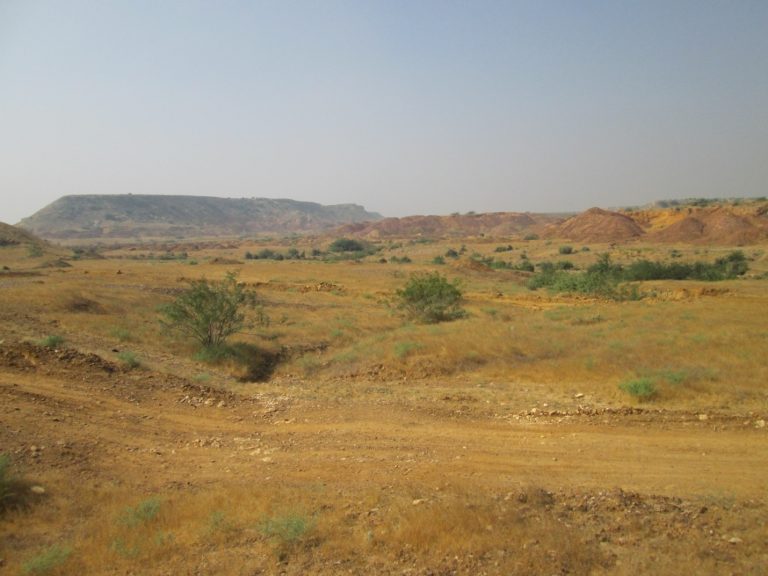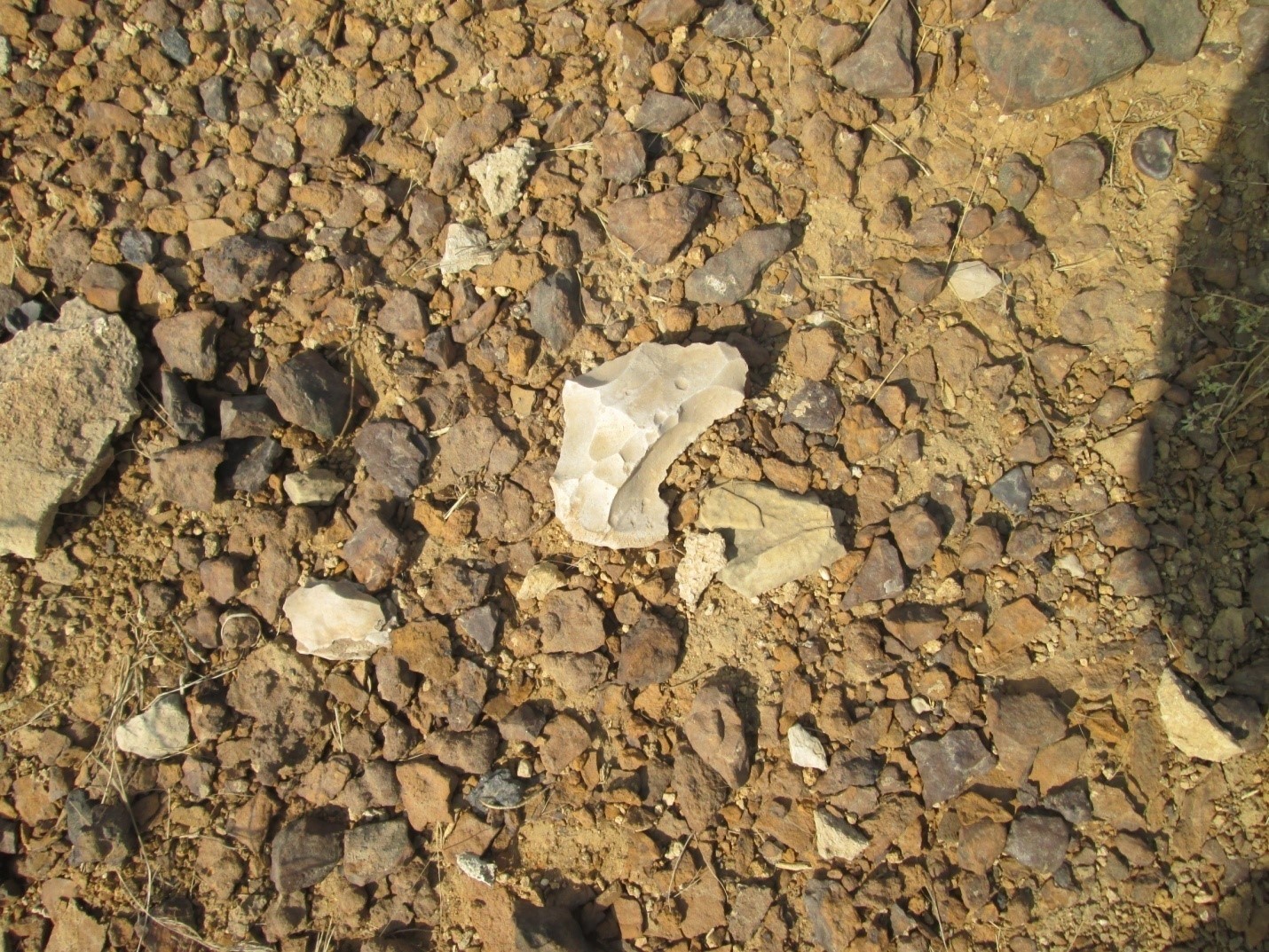
No any national and international has taken efforts to preserve the site as the illegal limestone quarrying continues unabated
Quratulain Kareem
On a winter morning of 2023, I thought to visit a Paleolithic site Ongar, located at a distance of about 120 kilometers from Karachi along the Karachi-Hyderabad National Highway. Ongar is better known as Milestone 101. It was discovered by W.A Fairservis (1975-77) and later surveyed by B. Allchin (1976), who recorded Paleolithic flint workshops on the top of the limestone terraces of Ongar’s easternmost ‘horseshoe-shaped’ hill.
The site was revisited in the late 1970’s by Professor A. R. Khan (1979), who collected an impressive amount of Paleolithic tools, now in the collection of the Museum of Prehistory and Paleography of Karachi University. The Ongar Hills were systematically surveyed again between 2004 and 2008 as part of a joint research program carried out by Ca’ Foscari University, Venice, and the Institute of Sindhology, Jamshoro. This showed that the archaeological area is larger than had previously been suggested. Paleolithic implements, and quarries and lithic workshops of the Bronze Age Indus civilization, were recorded even on the top of the terraces of Daphro and Bekhain. It became clear that most of the archaeological sites had been destroyed by limestone quarrying, which was still underway and greatly endangering all the remaining sites.
It seems that the archaeological remains of the region of Ongar, Daphro and Bekhain will disappear in the very near future
In one research paper it is written that a Brief visit to Ongar was made in January 2010 to monitor the state of preservation of the archaeological sites and to re-establish the location of Levalloisian assemblage discovered a few years previously along the terrace of a small seasonal watercourse. To our great surprise we noticed that numerous heaps of flint had been assembled at the mouth of the narrow valley that open some 200m east of the Levalloisian site.

The heaps are made of nodules mined from the top of the surrounding ‘mesas’, as well as cores and debit age flakes. It was immediately clear that flint had been quarried during the previous months for industrial purposes, as was also observed a few days before — and later Confirmed by local dwellers at Jhimpir, another prehistoric site located a few dozen kilometers to the south – west.
It is hard to believe that Ongar which has been devastated for at least 50 years by illegal limestone quarrying, is still currently exploited to produce flint cores and blades, seemingly to decorate private residence walls. The flint heaps recorded along the foothills testify to the systematic manufacture of well-defined products, detached from spherical blade- like flake cores by (local) artisans using metal hammers.
Despite many appeals for the preservation of the archaeological sites of Sindh, and the establishment of a new chair of Anthropology and Archaeology at Sindh University, Jamshoro, it seems that the archaeological remains of the region of Ongar, Daphro and Bekhain will disappear in the very near future, due to a complete lack of support, or lack of understanding of the importance of the sites for early prehistory, by local and national authorities.
We would like to draw the attention of the local national and international community to the extremely valuable Paleolithic material known to exist in the Ongar Hills, in the hope that the sites located there will not suffer the same fate as the archaeological sites of the Rohri Hills.
Many visits has been made to visit the site time to time by national and international scholars and they collected the artifacts but when I visited the site recently I found no artifact at site. I surveyed almost entire site and no any artifact has been collected from site. Scholastic predictions has been proven correct, no any national and international authorities took efforts to preserve the site and many illegal limestone quarrying, is still currently exploiting the site to produce flint cores and blades, seemingly to decorate private residence walls and other purposes. This site has great potential as a tourist spot.
______________________
Quratulain Kareem is Teaching Assistant at Department of Anthropology & Archaeology, University of Sindh. (Photo Courtesy: Author)